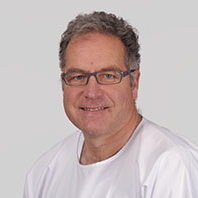Novel Bone Substitute Materials
A special issue of Materials (ISSN 1996-1944). This special issue belongs to the section "Biomaterials".
Deadline for manuscript submissions: closed (30 April 2015) | Viewed by 80298
Special Issue Editor
Interests: microarchitecture of scaffolds; osteoconduction; osteoinduction; ceramics; titanium; hydrogels; bone substitute materials; additive manufacturing; GTR/GBR membranes; delivery of epigenetically active small chemicals; delivery of BMPs and other factors
Special Issues, Collections and Topics in MDPI journals
Special Issue Information
Dear Colleagues,
Over the past few decades, we have witnessed new developments in bone substitute materials. These developments have been based on a better understanding of osteoinduction, osteoconduction, and stem cells for bone tissue engineering. However, autologous bone grafts are still the gold standard for daily clinical treatments. The main focus of the forthcoming ‘Novel Bone Substitute Materials’ issue is to present a comprehensive overview of these new developments. Recent advances in the science and technology of bone substitutes will be addressed. The various topics encompass all kinds of new materials, surface modifications, osteoinduction, osteoconduction, and the application of stem cells, as well as sophisticated examples of successful combinations already tested for their application in dentistry and orthopedics.
With immense pleasure, I invite you to submit a manuscript for this Special Issue. Full papers, communications, and reviews are welcome.
Franz E. Weber
Guest Editor
Manuscript Submission Information
Manuscripts should be submitted online at www.mdpi.com by registering and logging in to this website. Once you are registered, click here to go to the submission form. Manuscripts can be submitted until the deadline. All submissions that pass pre-check are peer-reviewed. Accepted papers will be published continuously in the journal (as soon as accepted) and will be listed together on the special issue website. Research articles, review articles as well as short communications are invited. For planned papers, a title and short abstract (about 100 words) can be sent to the Editorial Office for announcement on this website.
Submitted manuscripts should not have been published previously, nor be under consideration for publication elsewhere (except conference proceedings papers). All manuscripts are thoroughly refereed through a single-blind peer-review process. A guide for authors and other relevant information for submission of manuscripts is available on the Instructions for Authors page. Materials is an international peer-reviewed open access semimonthly journal published by MDPI.
Please visit the Instructions for Authors page before submitting a manuscript. The Article Processing Charge (APC) for publication in this open access journal is 2600 CHF (Swiss Francs). Submitted papers should be well formatted and use good English. Authors may use MDPI's English editing service prior to publication or during author revisions.
Keywords
- ceramics
- composites
- osteoconduction
- creeping substitution
- osteoinduction
- growth factors
- double delivery of growth factors
- instructive surface modifications
- bio-medical applications
- stem cells
- hydrogels
- vascularized bone grafts






